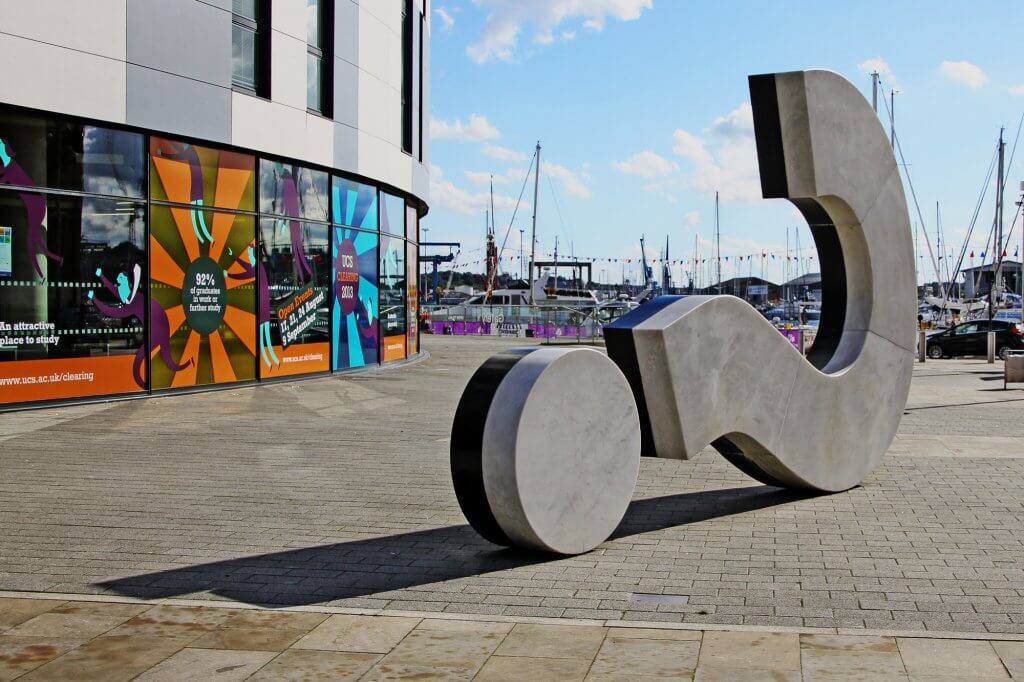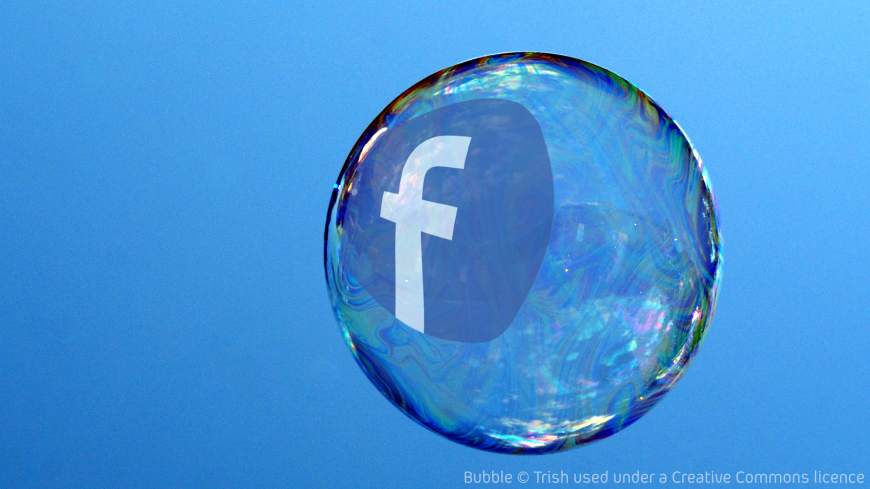Fuelled by the rise of social media as a news source and a growing distrust of facts offered up by the establishment, post-truth as a concept has been finding its linguistic footing for some time. . . . I wouldn’t be surprised if post-truth becomes one of the defining words of our time.’1
Oxford Dictionaries defines post-truth as an “adjective relating to circumstances in which objective facts are less influential in shaping public opinion than emotional appeals’. It was used twenty times more in 2016 compared with the previous year.
Western media seems to be full of examples of how we live in a post-truth world, as well as frequent discussions about it.
Politics in a post-truth world
In September 2015, the UK’s Daily Mail reported on its front page2 that David Cameron had committed an obscene act with a dead pig’s head when he was a student at Oxford University. The story came from a new biography of Cameron by Isabel Oakeshott, a Daily Mail journalist, and Lord Ashcroft, a billionaire businessman. Downing Street emphatically denied it, but the story spread like wildfire around the world.
The following day, Oakeshott admitted that she did not know whether the story was true. In a television interview she said,
We don’t say whether we believe it to be true. . . . We couldn’t get to the bottom of that source’s allegations. So we merely reported the account that the source gave us. And it’s up to other people to decide whether they give it any credibility or not.’3
In the run-up to the UK’s ‘Brexit’ referendum on leaving the European Union (EU), the Vote Leave campaign bus carried on its side a powerful message. It claimed that £350 million pounds a week goes to the EU, which would go to the UK National Health Service (NHS) if the UK was to leave. The pro-Leave media (particularly the Daily Mail and The Sun) publicised this claim widely, as well as various inflammatory claims about immigration.
The Remain campaign rebutted the claims, and provided supporting facts. The Office for National Statistics, which has a regulatory role in the use of statistics, issued statements making clear that the £350 million claim was absolutely false.4 It made no difference; the media was not interested in them. The claim had connected with many people’s emotionally and the denials failed to connect with them at all.
After the referendum, UKIP Leader Nigel Farage admitted that the claim on the side of the bus had been false.5 It was not the only false claim in the campaigning (the immigration claims had also been false), nor was it only the Leave side which had resorted to deception.
Emotions win elections
After the results were in, many people were left wondering why the UK had made such a momentous decision based on spin, soundbites, and deception rather than on serious debate and careful scrutiny of the facts. But this was a post-truth context: objective facts were ‘less influential in shaping public opinion than emotional appeals’.
Arron Banks, the main funder of the Leave campaign, said that their campaign was
‘taking an American-style media approach. What they said early on was “facts don’t work’, and that’s it. The Remain campaign featured fact, fact, fact, fact, fact. It just doesn’t work. You have got to connect with people emotionally. It’s the Trump success.’6
The 2016 US presidential election was, even more than the Brexit debate, a focus for the use of the term ‘post-truth’. Fact-checking services repeatedly exposed lies being told by Donald Trump and, to a much lesser extent, Hillary Clinton. The Washington Post maintained a list of Trump’s lies and half-truths.7‘ It gave 64% (as of 3 November 2016) of his statements their maximum ‘four-Pinnochio rating’, noting that, ‘By contrast, most politicians tend to earn Four Pinocchios 10 to 20 percent of the time. (Moreover, most of the remaining ratings for Trump are Three Pinocchios.). Glenn Kessler remarks, ‘There’s never been a presidential candidate like Donald Trump — someone so cavalier about the facts and so unwilling to ever admit error, even in the face of overwhelming evidence.’8
When ‘facts’ are just statements we like
It has always been the case that there have been politicians who lie to the public to get the results they want, and that there have been journalists prepared to publish spurious stories. But these were deviations from an accepted standard, and the public was angry when the deception became clear. In 2016, the mainstream media in general seems unable or unwilling to fight the tide of post-truth rhetoric, and many people seem to accept it all uncritically. Jonathan Freedland acknowledges the difficulties faced by newsrooms:
Fact checking is laborious, tedious and time-consuming, especially compared with the brio that can be generated by a sweeping (but false) assertion. . . . You can almost hear the nation’s inner teenager chant in unison: bor-ing. Broadcast exchanges are especially resistant to such fact-checking, warning interviewees they don’t ‘want to get stuck in the weeds’ or ‘lost in the detail’.9
Katharine Viner, editor-in-chief of The Guardian, writes:
When a fact begins to resemble whatever you feel is true, it becomes very difficult for anyone to tell the difference between facts that are true and ‘facts’ that are not. . . When ‘facts don’t work’ and voters don’t trust the media, everyone believes in their own ‘truth’ – and the results, as we have just seen, can be devastating.10
For many people now, a ‘fact’ is simply something that someone feels to be true, or wishes to be true. People distrust much of what is presented as fact by authorities – especially if those facts are unwelcome in some way. And yet, people quickly fall for fake news on social media.
Vitality over veracity
This situation is made much worse by the ability of politicians and campaigners to communicate their message directly to supporters through social media – with no fact checking at all.
Neetzan Zimmerman, former blogger at Gawker and now editor-in-chief at Whisper, has said, ‘Nowadays it’s not important if a story’s real, the only thing that really matters is whether people click on it.’ Viner laments that, ‘the new measure of value for too many news organisations is virality rather than truth or quality.’11
As Jonathan Freedland writes,
In this era of post-truth politics, an unhesitating liar can be king. The more brazen his dishonesty, the less he minds being caught with his pants on fire, the more he can prosper. And those pedants still hung up on facts and evidence and all that boring stuff are left for dust, their boots barely laced while the lie has spread halfway around the world.12 13
 How does untruth spread so quickly?
How does untruth spread so quickly?
Why do people click so frequently on false stories? How do these lies spread so rapidly? It is certainly true that facts and non-facts circulate at a speed that would have been inconceivable before the Internet and social media.
Most people do not have the means, or perhaps inclination, to fact check the things that they see on social media. Psychologists say that all human beings have a strong confirmation bias, which makes us more likely to seek out and respond positively to information that confirms ideas we already have, rather than anything which opposes our ideas. So we will quickly believe anything that meshes with our particular worldview or psychological outlook, and dismiss anything that challenges us.
According to a recent study from Stanford University, students have a ‘stunning and dismaying consistency’ in being duped by fake news stories again and again. The results were described as ‘bleak’ and a ‘threat to democracy’.14
Information cascades
The ideas, whether true or false, spread through an ‘information cascade’. One person shares something with a few friends, who each share it with a few of their friends, and so on. It relies on social proof. For example, imagine trying to choose between two neighbouring restaurants, one of which is busy while the other is empty. You are most likely to choose to go to the busy one on the basis that all the people in there must have had good reasons for choosing that one rather than the other. The trouble with such social proof is that the first couple of people may have gone into that restaurant for some reason completely unrelated to the food – maybe they’re family members of the chef who will get a free meal. The next people to come along see them eating and enjoying themselves and assume it means the food is better than in the empty restaurant. That amplifies the effect for the next people, and the social ‘proof’ multiplies.
 Information cascades can take place extremely quickly within social media, and becomes unstoppable. According to Danielle Citron, a lawyer specialising in online bullying and hate crimes,
Information cascades can take place extremely quickly within social media, and becomes unstoppable. According to Danielle Citron, a lawyer specialising in online bullying and hate crimes,
‘Because people cannot know everything, they often rely on what others say even if it contradicts their knowledge. At a certain point, it is rational for people to stop paying attention to their own information and to look to what others know. People forward on what others think, even if the information is false, misleading, or incomplete, because they think they have learned something valuable. The cycle repeats itself, spreading information to many others in an information cascade.15
It’s the ideas that connect with us emotionally which we share quickly as part of an information cascade. The boring rebuttal which comes along a little later doesn’t stimulate the pleasure centres in our brains in the same way, so we don’t share it. It becomes a mere information trickle.
Viner writes that
the age of relentless and instant information – and uncertain truths – can be overwhelming. We careen from outrage to outrage, but forget each one very quickly: it’s doomsday every afternoon.16
Filter bubbles
This is compounded by the social media channel algorithms, which are designed to give us more of what these companies think we want. The Facebook news feed algorithm restricts what we see to the kinds of things we have already liked and clicked on. We therefore have our outlook on the world reinforced day by day through the things which appear in our timelines.
 Eli Pariser, co-founder of Upworthy, coined the term ‘filter bubble’ in 2011 to describe this effect. He was concerned about how Google’s personalised search function results in us seeing information that reinforces our worldview rather than challenging it. Pariser argued even then that social media platforms should ensure that ‘their algorithms prioritise countervailing views and news that’s important, not just the stuff that is most popular or most self-validating’. But that is not what we have: we’re stuck in the filter bubbles.17
Eli Pariser, co-founder of Upworthy, coined the term ‘filter bubble’ in 2011 to describe this effect. He was concerned about how Google’s personalised search function results in us seeing information that reinforces our worldview rather than challenging it. Pariser argued even then that social media platforms should ensure that ‘their algorithms prioritise countervailing views and news that’s important, not just the stuff that is most popular or most self-validating’. But that is not what we have: we’re stuck in the filter bubbles.17
Self-reinforcing movements
The social media world also seems to have given people the freedom to express racist and sexist views in increasingly strident terms – as demonstrated by Donald Trump and his followers, among many others. Within one filter bubble, such sentiments can be expressed freely, and are quickly reinforced by others expressing similar ideas. Meanwhile, in another filter bubble, entirely opposite ideas are circulating.
Academic and journalist Zeynep Tufekci argues that Trump’s rise is ‘actually a symptom of the mass media’s growing weakness, especially in controlling the limits of what it is acceptable to say.’18 She says,
As I watched this election season unfold, I wanted to gain a better understanding of the power of the Trump social media echo chamber. What I’ve been reading has surprised even my jaded eyes. It’s a world of wild falsehoods and some truth that you see only rarely in mainstream news outlets, or hear spoken among party elites. . . .
[Trump] uses Twitter as a kind of gut focus-group polling to pick up and amplify messages that resonate. . . . The Trump phenomenon is not simply a creation of newspaper columnists or cable news bookers who initially thought his candidacy was a joke to be exploited for ratings. His emergence shows the strength of his supporters, united on social media, who believe that the media is a joke.19
 Truth stumbling in the street
Truth stumbling in the street
Katharine Viner points to the ‘diminishing status of truth’ in our current media context, saying:
‘This does not mean that there are no truths. It simply means, as this year has made very clear, that we cannot agree on what those truths are, and when there is no consensus about the truth and no way to achieve it, chaos soon follows.’20
This situation brings Isaiah’s assessment of his nation:
So justice is driven back, and righteousness stands at a distance; truth has stumbled in the streets, honesty cannot enter. Truth is nowhere to be found, and whoever shuns evil becomes a prey. – Isaiah 59:14
Jeremiah announces a similar verdict:
This is the nation that has not obeyed the Lord its God or responded to correction. Truth has perished; it has vanished from their lips. – Jeremiah 7:28
How should we respond?
Truth matters immensely to Christians, because we are followers of the one who is The Truth (John 14:6). To know him is to know the truth and to discover real freedom. Paul says that the church is ‘the pillar and foundation of the truth’ (1 Timothy 3:15). His focus is on the church having the task of ‘promoting and protecting the gospel’21, but we cannot defend the truth of the gospel while being unconcerned about truth more generally. As John Calvin famously observed, all truth is God’s truth.
How, then, are we to live in a world where truth stumbles and the post-truth information cascades easily sweep us along?
Commit to finding truth
Part of the answer is that we must remain passionately committed to truth – even when it is deeply uncomfortable to do so.
We must commit to discovering the truth, which means we need to do our best to be sure of the sources of the information which comes our way. We must question the assertions that come streaming our way via our friends’s Facebook likes and tweets, and not assume that ‘social proof’ means that anything is proved at all.
Andy Walton writes that one way of ‘kicking back against the post-truth world’ is to ‘pay for good journalism’:
It costs money to employ people to do a job and write to a high standard. This money comes partly from advertising – content which appears for free on your screen needs to be paid for somehow. Getting a subscription to publications you trust (and not complaining too much about the advertising you do encounter) is a good start.22
This also means that we need to commit to escaping our filter bubbles and actively finding perspectives which challenge our default positions.
Commit to challenging untruth
We must commit to only sharing things in social media that we are confident about. We must not simply contribute to information cascades of emotionally appealing untruth. Instead, we should be prepared to challenge the false assertions and spin, to introduce alternative viewpoints, and to share fresh perspectives.
Above all, we need to be prepared to share a distinctively Christian perspective: that means what we share needs to be characterised by both truth AND grace (John 1:18; Ephesians 4:15). We should be taking whatever opportunities we can find to point people to the Lord Jesus Christ. Sometimes that means simply setting people on a path towards truth generally.
Prof. N.T. Wright says that the church has an important vocation of speaking truth to power – a prophetic challenging of the way the world is. He makes an interesting observation about Jesus’s promise to his disciples that the Holy Spirit will ‘prove the world to be in the wrong about sin and righteousness and judgment’ (John 16:8). How will the Spirit do this? The context is of Jesus sending his Spirit to live in, and empower, believers. So presumably the main way that the Spirit convicts the world is through Spirit-empowered Christians speaking up and challenging a world which always wants to turn its back on The Truth.
Cracks in a post-truth edifice?
We may despair about our post-truth world, but not only do we have the Spirit living in us, he is also at work in hearts and minds of those who don’t yet know him. I am intrigued by the fact that much the discussion about ‘post-truth’ is not rejoicing in it, but rather lamenting the state our society has reached. Could it be that a new desire for truth is just beginning to surface? We must pray that it is.
Share this Post
Photo credits (from top):
Original bubble image © Trish. Used under a Creative Commons (CC-BY-NC-SA-2.0) licence. Facebook logo added by Tony Watkins. May be reshared under a CC-BY-NC-SA-2.0 licence.
© Gage Skidmore. Used under a Creative Commons (CC-BY-SA-2.0) licence.
© Adam Fagen, used under a Creative Commons (CC-BY-NC-SA-2.0) licence.
© Gerald Shields, used under a Creative Commons (CC-BY-SA-4.0) licence.
© Kris Krug, used under a Creative Commons (CC-BY-SA-2.0) licence.
© Leo Reynolds, used under a Creative Commons (CC-BY-NC-SA-2.0) licence.


